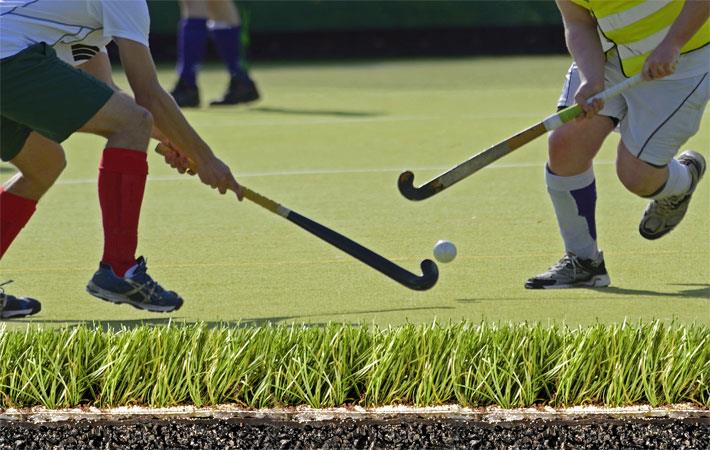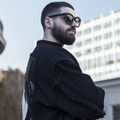Interviews
News Flash
Lanxess' Colortherm pigments colour grass for sports
09 Mar '19
3 min read

Pic: Lanxess
Colortherm pigments from Lanxess have emerged as widely used tool for colouring artificial blades of grass in sports venues since these are able to withstand wind and resist weather phenomena. Soccer pitches, golf courses, tennis courts and football fields worldwide are equipped with artificial turf, as are surfaces at bowling alleys and indoor pools.
Since the late 1980s, professional field hockey has been played exclusively on artificial turf. Sports venues around the world have to be able to resist a wide range of weather phenomena. Along with facades, the grass in the middle of a stadium is particularly subject to these conditions. In most cases, it is also not protected by a roof. As a result, stadium operators increasingly rely on resilient artificial turf, which offers many advantages over its natural counterpart.
Not only is artificial turf less expensive to maintain – requiring neither mowing, fertilising nor watering – it also provides perfect conditions for play all year long, without puddles or tripping hazards such as holes or tufts of grass.
The pigments’ weather resistance is an advantage for professional athletes and spectators alike. After all, there is more to an unforgettable stadium experience than just the players’ performance. The atmosphere also has to be right. “When your favourite team is playing, you probably want to see it on a turf that is rich and green,” says Stefano Bertolucci, product expert for Colortherm pigments at Lanxess. “That is why our inorganic pigments for colouring artificial turf have proven so successful. Not only do they make it possible to precisely match the natural colour of grass, they also help keep artificial turf looking great for years to come, despite rain, snow or ice.”
Colortherm pigments are easy to use. Because they are ground into ultra-fine particles during production, they are available as a powder that is easily distributed in plastic. More specifically, this means that a content of 1 to 4 per cent by weight in the plastic “blades of grass” creates a rich colour. The pigments are also coated with a special protective layer, allowing them to be processed at temperatures of up to 260 degrees without losing their colour intensity. In addition to Colortherm Yellow pigments, which are used for artificial turf, Lanxess also offers reds, greens, browns and blacks that are available in up to 100 different shades.
“The synthetically produced iron oxide pigments are completely safe for people and nature,” Bartolucci explains. In terms of mass, iron is the second most common element on earth and is the fourth most common one in the earth’s crust, accounting for around 5 per cent. “However, in terms of colouring, our pigments are superior to their natural counterparts thanks to their purity,” Bartolucci says.
Green, red, yellow, brown or black – thanks to their properties, Lanxess pigments can be used to colour nearly all plastics. So it is no wonder that they are used beyond artificial turf to colour plastic products in the world of sports. Years on, Lanxess pigments still keep running tracks and seats in the stands at many stadiums looking colourful and bright, despite sun, rain, snow, ice and technical demands. (SV)
Since the late 1980s, professional field hockey has been played exclusively on artificial turf. Sports venues around the world have to be able to resist a wide range of weather phenomena. Along with facades, the grass in the middle of a stadium is particularly subject to these conditions. In most cases, it is also not protected by a roof. As a result, stadium operators increasingly rely on resilient artificial turf, which offers many advantages over its natural counterpart.
Not only is artificial turf less expensive to maintain – requiring neither mowing, fertilising nor watering – it also provides perfect conditions for play all year long, without puddles or tripping hazards such as holes or tufts of grass.
The pigments’ weather resistance is an advantage for professional athletes and spectators alike. After all, there is more to an unforgettable stadium experience than just the players’ performance. The atmosphere also has to be right. “When your favourite team is playing, you probably want to see it on a turf that is rich and green,” says Stefano Bertolucci, product expert for Colortherm pigments at Lanxess. “That is why our inorganic pigments for colouring artificial turf have proven so successful. Not only do they make it possible to precisely match the natural colour of grass, they also help keep artificial turf looking great for years to come, despite rain, snow or ice.”
Colortherm pigments are easy to use. Because they are ground into ultra-fine particles during production, they are available as a powder that is easily distributed in plastic. More specifically, this means that a content of 1 to 4 per cent by weight in the plastic “blades of grass” creates a rich colour. The pigments are also coated with a special protective layer, allowing them to be processed at temperatures of up to 260 degrees without losing their colour intensity. In addition to Colortherm Yellow pigments, which are used for artificial turf, Lanxess also offers reds, greens, browns and blacks that are available in up to 100 different shades.
“The synthetically produced iron oxide pigments are completely safe for people and nature,” Bartolucci explains. In terms of mass, iron is the second most common element on earth and is the fourth most common one in the earth’s crust, accounting for around 5 per cent. “However, in terms of colouring, our pigments are superior to their natural counterparts thanks to their purity,” Bartolucci says.
Green, red, yellow, brown or black – thanks to their properties, Lanxess pigments can be used to colour nearly all plastics. So it is no wonder that they are used beyond artificial turf to colour plastic products in the world of sports. Years on, Lanxess pigments still keep running tracks and seats in the stands at many stadiums looking colourful and bright, despite sun, rain, snow, ice and technical demands. (SV)
Fibre2Fashion News Desk – India
Popular News
Leave your Comments
Editor’s Pick
Therese Premler-Andersson
Textile Machinery Association of Sweden (TMAS)
Dr. Michael Duetsch & Man Woo Lee
UPM Biochemicals and Dongsung Chemical
Navin Sharma
Yash Textile Machines Private Limited
































-Ltd..jpg?tr=w-120,h-60,c-at_max,cm-pad_resize,bg-ffffff)





.jpg?tr=w-120,h-60,c-at_max,cm-pad_resize,bg-ffffff)
.jpg?tr=w-120,h-60,c-at_max,cm-pad_resize,bg-ffffff)






